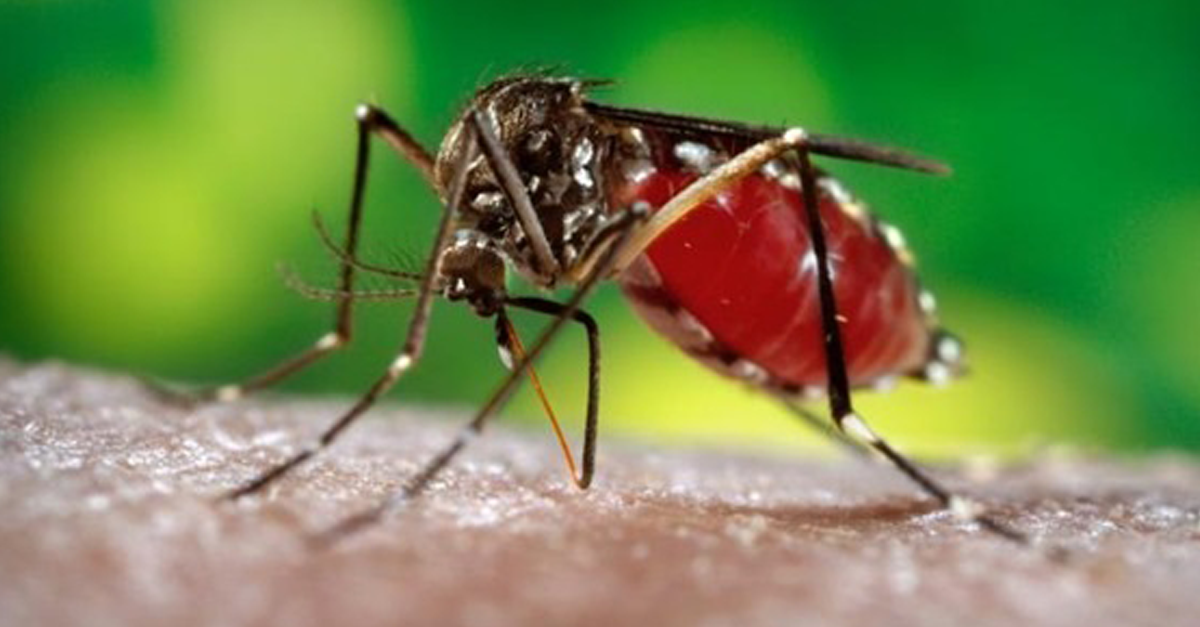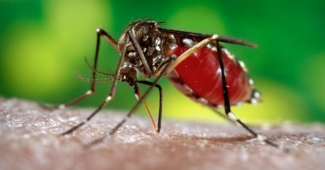A clinician’s perspective on Zika, plus: “Zika virus: What do we know about it, and how can it be contained?” in English & Spanish
 On Monday, Zika virus was declared a global emergency by the World Health Organization. The ongoing outbreak, which is expected to spread, reminds us of the importance of a thorough medical history, particularly for our mobile patients. While local transmission of Zika virus has not been reported in the continental United States, many of our migrant patients like migratory agricultural workers travel between the US and infected areas regularly; this requires vigilance from migrant clinicians in identifying patients at risk. Migrant Clinicians Network recommends the following steps for clinicians serving migrant populations:
On Monday, Zika virus was declared a global emergency by the World Health Organization. The ongoing outbreak, which is expected to spread, reminds us of the importance of a thorough medical history, particularly for our mobile patients. While local transmission of Zika virus has not been reported in the continental United States, many of our migrant patients like migratory agricultural workers travel between the US and infected areas regularly; this requires vigilance from migrant clinicians in identifying patients at risk. Migrant Clinicians Network recommends the following steps for clinicians serving migrant populations:
- The Centers for Disease Control and Prevention (CDC) recommends that clinicians ask all pregnant women for their recent travel history. There is evidence that maternal-fetal transmission of the virus increases microcephaly, a serious birth defect. Infection can occur during any trimester. For those who have traveled to areas with a Zika outbreak, screen for Zika infection. For more, refer to the CDC’s Interim Guidelines for Pregnant Women During a Zika Virus Outbreak. This is especially relevant to our mobile patients, who may be at greater risk due to their mobile lifestyles. Ask all migrant women of childbearing age about their future travel plans. All migrant women who are pregnant or considering pregnancy should be encouraged to delay travel to areas with a Zika outbreak if possible.
- Consider the possibility of Zika virus infection in mobile patients with acute fever, rash, arthralgia, or conjunctivitis within two weeks after return from travel to an area with a Zika outbreak.
- Educate staff about Zika and provide written information for patients. The CDC offers fact sheets and posters.
The CDC recently hosted an information-packed webinar for clinicians on the Zika virus. The webinar also covers how to distinguish Zika from its related illnesses, Dengue and Chikungunya. Hesperian is also offering emergency information on Zika in Spanish.
The following article, in English and in Spanish, is reprinted with permission from the Hub, the news site of Johns Hopkins University. Entitled “Zika virus: What do we know about it, and how can it be contained?” the article asks questions of Johns Hopkins expert Anna Durbin. Please visit http://hub.jhu.edu/2016/01/29/zika-virus-public-health-expert for the original article. Scroll down for the article in Spanish.
Zika virus: What do we know about it, and how can it be contained?
by Saralyn Lyons, The Hub
A recent outbreak of Zika virus in Brazil is causing alarm throughout the Americas, with health officials warning Thursday that the disease is "spreading explosively." The World Health Organization (WHO) will convene an emergency meeting Monday to address the problem, and the Centers for Disease Control and Prevention have issued travel alerts for people visiting Brazil and other endemic areas.
Much of the concern about the virus stems from its apparent link to microcephaly, a birth defect wherein an infant's head is smaller than normal, often because the brain is undersized and may not have developed properly. Symptoms of the virus are otherwise not serious in adults, making its spread all the more rapid.
The Hub reached out to Anna Durbin, an associate professor and researcher in the Department of International Health at the Johns Hopkins Bloomberg School of Public Health to discuss Zika virus and its threat to public health. Durbin's work focuses on vaccine development for Dengue and other related mosquito-borne viruses.
What do we know about the Zika virus, and what are the risks?
We know that it is a Flavivirus, which means that it is related to viruses like Dengue, West Nile, and Yellow Fever virus. It is a mosquito-borne virus, and the primary mosquito that carries the virus is called Aedes aegypti, the same mosquito that carries Dengue. There is a huge outbreak of the virus in Brazil, and as the WHO said, it's spreading explosively across the Americas.
It's a relatively new virus, meaning that it hasn't been seen in populations until more recently. It was discovered in 1947 in a rhesus monkey. The scientists were actually looking for Yellow Fever virus, but found different viruses that are carried by mosquitoes, and Zika was one of them.
There were a couple of smaller outbreaks: one in Micronesia and one in French Polynesia. What's interesting is that those outbreaks were much smaller than the current outbreak in the Americas, and there did not appear to be cases of microcephaly associated with those outbreaks. That said, those outbreaks were quite small, so it might be that it was not noticed. In the French Polynesia outbreak, there were increased cases of Guillain-Barré syndrome, and investigators there thought that it may be related to Zika virus. That's not unusual. We do see Guillain-Barré syndrome after various viral infections—most commonly influenza.
There is no vaccine for Zika, and the vast majority of people don't have many symptoms. Reports are that only about 20 percent of people who are infected with the virus have symptoms, and those symptoms generally are a rash, a low-grade fever, joint swelling and joint pain, and conjunctivitis, or redness of the eye.
The big concern now throughout the Americas is that in Brazil, they have seen more cases of microcephaly than in previous years. Investigators are concerned that there might be a link, that if a mother is infected during her pregnancy it might lead to microcephaly.
Is that what makes it so dangerous?
In terms of transmission, the fact that so many people don't have symptoms contributes to why it's spreading so rapidly. People don't feel sick and go about their normal day—they go to work, they travel. They're going around getting bitten by mosquitoes, whereas if they're home in bed, they're less likely to be bitten and therefore transmit the disease.
The reason this outbreak is so concerning is the possible link between infection in the mother during pregnancy and microcephaly. That's such a devastating outcome for the fetus. We have no treatment for Zika, so even if the mother is diagnosed during her pregnancy, right now we don't have any drugs to treat her or her fetus.
How does the virus spread?
The mosquito bites you and takes a blood meal. The virus lives in the blood meal that the mosquito has taken. That virus grows within the mosquito and replicates, making its way, essentially, through the mosquito to its saliva. When the mosquito bites another person, the virus gets injected, via the mosquito's saliva, into the next person.
What challenges do health organizations face in containing the spread of this virus?
The biggest hurdle is mosquito control and trying to prevent the mosquitoes from spreading the disease, which can be very difficult. We do have intermittent mosquito control mechanisms that have been used for select outbreaks, but they are very difficult to maintain and are very expensive. And any time you stop the mosquito control, the mosquitoes come back, so you have to have ongoing and continual efforts—meaning insecticides, fogging—that are very difficult to sustain for long periods of time.
The other hurdle is figuring out how we can protect women who become pregnant. As you can imagine, it can be very scary for women in endemic areas who may become pregnant. They don't know if they have Zika because they may not have a lot of symptoms, and they may not know until later in their pregnancy or until after they've given birth.
It's important to determine whether or not there is a real link between Zika and microcephaly, and to understand, if there is a link, how that link works so you can intervene in other ways until we can find a vaccine or find a drug. Right now, there is high suspicion that Zika is causing microcephaly, but we haven't confirmed it, and we really need studies to confirm that to make sure that we are in fact targeting the right cause in order to prevent microcephaly in these kids.
How can health care workers get ahead of the spread of the disease to prevent further infection?
I think the biggest thing to try to do right now is to be informed about protecting yourself from mosquitoes. Remove mosquito breeding areas from around your home. These mosquitoes really like to live close to people—they're day-biters, they live around homes, sometimes even in the homes. They breed in very small amounts of water, so it's important to get the message out that people should remove any areas of standing water around homes.
When you're living in endemic areas, it's really difficult—you'd have to be wearing DEET every day—but little things like putting screens on windows if possible, wearing long pants, long sleeves, those are important things to do.
In terms of governmental support in endemic areas, we need larger governmental efforts in vector control. Again, that's not going to be easy to sustain. We've been trying vector control for Dengue, but it hasn't worked because efforts have to be so intensive and it has to be prolonged, and finding the financial resources and the will to sustain it has been difficult.
You mentioned that it had been discovered in a rhesus monkey. Are there other animals that could be carriers for the virus?
Not that we know of. Most Flaviviruses only have mosquitoes, humans, and some monkeys as hosts, so we think Zika is going to be like that. West Nile virus can replicate in birds but is carried by different mosquitoes and is in a different virus family—it's more related to Japanese encephalitis. But Yellow Fever and Dengue only inhabit nonhuman primates, humans, and mosquitoes. We think that will probably be true of Zika—but we don't know. We have to do the studies.
I will say the other big focus is that we need rapid diagnostic tests for Zika, and we need a vaccine. I think a rapid diagnostic test may be easier and quicker to develop than a vaccine, because right now, the tests that we use to diagnose Zika are very labor-intensive and they take a long time. We can't test at point of care right now; we have to send the tests off. So rapid diagnostics are a high priority, and vaccine development is a high priority as well.
What is the risk of the virus spreading to the United States?
Most public health experts, and I would agree with this, feel the risk is low. Will we see cases of Zika virus in the United States? Most definitely yes. But the vast majority of those cases will be travelers returning from Zika-endemic areas. Could Zika possibly be transmitted within the United States? I would say yes, but again it would probably be very low level and not be sustained, similar to what we've seen with Dengue in the United States. There was a recent outbreak of Dengue in Hawaii that was contained. We've had a few cases of Dengue transmitted in Florida and the Florida Keys in the past five years or so, but it hasn't been sustained.
A lot of that has to do with the infrastructure we have here in the United States—people have air conditioners, screens in their windows. People spend a lot of time indoors. There's not as much time spent exposed to mosquitoes.
It's important to know that the National Institutes of Health and the government are aware of the problem. Meetings have been held. They're looking at research agendas and prioritizing resources for Zika. The WHO is convening an emergency meeting on Monday. So I think the public health authorities and governments are aware of this problem and are mobilizing to do everything they can.
Link to Article: http://hub.jhu.edu/2016/01/29/zika-virus-public-health-expert
-------
Español: Virus Zika: ¿Qué sabemos sobre él, y cómo puede ser contenido?
Un brote reciente del virus Zika en Brasil está causando alarma en todas las Américas, con funcionarios de salud de advertencia el jueves que la enfermedad es "difundir y explotar." La Organización Mundial de la Salud (OMS) convocará una reunión de emergencia de lunes a abordar el problema, y los Centros para el Control y la Prevención de Enfermedades han emitido alertas de viaje para las personas que visitan Brasil y otras áreas endémicas.
Gran parte de la preocupación por el virus proviene de su aparente enlace a microcefalia, un defecto congénito en el que la cabeza del bebé es más pequeño de lo normal, a menudo debido a que el cerebro es insuficiente y puede no haber desarrollado adecuadamente. Los síntomas del virus no son otra cosa grave en los adultos, por lo que su difusión tanto más rápida.
El Hub se acercó a Anna Durbin, un profesor asociado e investigador en el Departamento de Salud Internacional de la Escuela de Salud Pública Bloomberg de la Johns Hopkins para discutir el virus Zika y su amenaza para la salud pública. El trabajo de Durbin se centra en el desarrollo de vacunas para el dengue y otros virus transmitidos por mosquitos relacionados.
¿Qué sabemos sobre el virus Zika, y cuáles son los riesgos?
Sabemos que es un Flavivirus, lo que significa que está relacionado con los virus como el dengue, del Nilo Occidental y el virus de la fiebre amarilla. Es un virus transmitido por mosquitos y el mosquito primaria que transmite el virus se llama Aedes aegypti, el mismo mosquito que transmite el dengue. Hay un enorme brote del virus en Brasil, y como dijo la OMS, se está extendiendo de forma explosiva a través de las Américas.
Es un relativamente nuevo virus, lo que significa que no se ha visto en las poblaciones hasta más recientemente. Fue descubierto en 1947 en un mono rhesus. Los científicos estaban buscando realmente el virus de la fiebre amarilla, pero no encontraron virus diferentes que acarrean los mosquitos, y Zika fue uno de ellos.
Había un par de brotes más pequeños: uno en uno Micronesia y la Polinesia Francesa. Lo que es interesante es que esos brotes eran mucho más pequeño que el actual brote en las Américas, y no parecían ser casos de microcefalia asociada a esos brotes. Dicho esto, los brotes eran bastante pequeñas, por lo que podría ser que no se advirtió. En el brote de la Polinesia Francesa, no se incrementaron los casos de síndrome de Guillain-Barré, y los investigadores pensaron que allí puede estar relacionado con el virus Zika. Eso no es inusual. Vemos el síndrome de Guillain-Barré después de varias infecciones virales más comúnmente-influenza.
No hay vacuna para Zika, y la gran mayoría de la gente no tiene muchos síntomas. Los informes son que sólo un 20 por ciento de las personas que están infectadas con el virus tienen síntomas, y los síntomas generalmente son una erupción cutánea, fiebre de bajo grado, hinchazón de las articulaciones y dolor en las articulaciones, y la conjuntivitis, o enrojecimiento del ojo.
La gran preocupación ahora todo el continente americano es que en Brasil, que han visto más casos de microcefalia que en años anteriores. Los investigadores están preocupados de que podría haber un vínculo, que si una madre se infecta durante el embarazo podría conducir a la microcefalia.
¿Que lo hace tan peligroso?
En cuanto a la transmisión, el hecho de que muchas personas no tienen síntomas contribuye a por qué se está extendiendo tan rápidamente. Las personas no se sienten enfermos y van sobre su día normal, van a trabajar, viajan. Ellos van alrededor de la picadura de mosquitos, mientras que si están en casa en la cama, que son menos propensos a ser mordidos y por lo tanto transmitir la enfermedad.
La razón de este brote es tan preocupante es la posible relación entre la infección de la madre durante el embarazo y la microcefalia. Eso es un resultado tan devastadora para el feto. Tenemos ningún tratamiento para Zika, por lo que incluso si la madre se diagnostica durante el embarazo, en este momento no tenemos ninguna droga para el tratamiento de ella o de su feto.
¿Cómo se transmite el virus?
El mosquito que muerde y toma una comida de sangre. El virus vive en la harina de sangre que el mosquito ha tomado. Ese virus se desarrolla dentro del mosquito y se replica, haciendo su camino, esencialmente, a través del mosquito para su saliva. Cuando el mosquito pica a otra persona, el virus se inyecta, a través de la saliva del mosquito, a la siguiente persona.
¿Qué retos enfrentan las organizaciones de salud en la contención de la propagación de este virus?
El obstáculo más grande es el control de mosquitos y tratando de evitar que los mosquitos se propague la enfermedad, que puede ser muy difícil. Tenemos los mecanismos de control de mosquitos intermitentes que se han utilizado para seleccionar los brotes, pero son muy difíciles de mantener y son muy caros. Y en cualquier momento se detiene el control de mosquitos, los mosquitos volver, así que hay que tener insecticidas en curso y continuos esfuerzos intencionados, nebulización, que son muy difíciles de sostener durante largos períodos de tiempo.
El otro obstáculo es averiguar cómo podemos proteger a las mujeres que se quedan embarazadas. Como se puede imaginar, puede ser muy aterrador para las mujeres en las zonas endémicas que puedan quedar embarazadas. No sé si tienen Zika, ya que no pueden tener una gran cantidad de síntomas, y puede que no sepan hasta más tarde en el embarazo o hasta que después de haber dado a luz.
Es importante determinar si existe o no un vínculo real entre Zika y microcefalia, y comprender, si hay un vínculo, la forma en que el enlace funciona para que pueda intervenir en otras formas hasta que podamos encontrar una vacuna o encontrar un medicamento. En este momento, hay una alta sospecha de que Zika está causando microcefalia, pero no lo han confirmado, y que realmente necesitan estudios para confirmar que para asegurarse de que estamos en realidad dirigidas a la causa correcta con el fin de evitar que la microcefalia en estos niños.
¿Cómo pueden los trabajadores de la salud adelantarse a la propagación de la enfermedad a prevenir una infección?
Creo que lo más importante para tratar de hacer ahora es estar informado acerca de cómo protegerse de los mosquitos. Eliminar las zonas de reproducción de mosquitos alrededor de su casa. Estos mosquitos realmente les gusta vivir cerca de las personas-son mordedores día, viven alrededor de las casas, a veces incluso en los hogares. Se reproducen en muy pequeñas cantidades de agua, por lo que es importante para obtener el mensaje de que la gente debe quitar cualquier áreas de agua estancada alrededor de las casas.
Cuando uno vive en zonas endémicas, es muy difícil-you'd han de estar usando DEET cada día, pero pequeñas cosas como poner pantallas en las ventanas si es posible, el uso de pantalones largos, mangas largas, esas son las cosas importantes que hacer.
En términos de apoyo gubernamental en las zonas endémicas, necesitamos esfuerzos gubernamentales más grandes en el control de vectores. Una vez más, eso no va a ser fácil de sostener. Hemos estado tratando de control de vectores de dengue, pero no ha funcionado porque los esfuerzos tienen que ser tan intensa y tiene que ser prolongada, y la búsqueda de los recursos financieros y la voluntad de sostener que ha sido difícil.
Usted ha mencionado que había sido descubierto en un mono rhesus. ¿Hay otros animales que podrían ser portadores del virus?
No es que nosotros sepamos. La mayoría de los Flavivirus solamente tienen los mosquitos, humanos y algunos monos como anfitriones, por lo que piensan Zika va a ser así. El virus del Nilo Occidental puede replicarse en las aves, pero es transportado por diferentes mosquitos y está en un virus de la familia diferente: es más relacionados con la encefalitis japonesa. Sin embargo, la fiebre amarilla y el dengue solamente habitan en los primates no humanos, los humanos y los mosquitos. Pensamos que probablemente será cierto de Zika, pero no sabemos. Tenemos que hacer los estudios.
Debo decir que el otro gran foco es que necesitamos pruebas de diagnóstico rápido para Zika, y necesitamos una vacuna. Creo que una prueba diagnóstica rápida puede ser más fácil y más rápido de desarrollar que una vacuna, porque en este momento, las pruebas que utilizamos para diagnosticar Zika son muy intensivos en mano de obra y llevan mucho tiempo. No podemos probar en el punto de atención en este momento; tenemos que enviar las pruebas fuera. Así que diagnósticos rápidos son de alta prioridad, y el desarrollo de vacunas es una prioridad también.
¿Cuál es el riesgo de la propagación del virus a los Estados Unidos?
La mayoría de expertos en salud pública, y estoy de acuerdo con esto, sienten el riesgo es bajo. Veremos casos de virus Zika en los Estados Unidos? Definitivamente sí. Pero la gran mayoría de los casos será viajeros que regresan de zonas endémicas Zika. Zika podría posiblemente ser transmitida dentro de los Estados Unidos? Yo diría que sí, pero de nuevo, probablemente sería muy bajo nivel y no ser sostenido, similar a lo que hemos visto con el dengue en los Estados Unidos. Hubo un reciente brote de dengue en Hawai que estaba contenida. Hemos tenido algunos casos de dengue transmitidos en Florida y los Cayos de Florida en los últimos cinco años más o menos, pero no ha sido sostenido.
Mucho de eso tiene que ver con la infraestructura que tenemos aquí en los Estados Unidos-personas tienen aparatos de aire acondicionado, pantallas en sus ventanas. La gente pasa mucho tiempo en casa. No hay mayor cantidad de tiempo de exposición a los mosquitos.
Es importante saber que los Institutos Nacionales de Salud y el gobierno son conscientes del problema. Se han realizado reuniones. Que están viendo los programas de investigación y priorizar recursos para Zika. La OMS ha convocado una reunión de emergencia el lunes. Así que creo que las autoridades de salud pública y los gobiernos son conscientes de este problema y se movilizan para hacer todo lo posible.
Enlace para leer articulo: http://hub.jhu.edu/2016/01/29/zika-virus-public-health-expert
-------
Like what you see? Amplify our collective voice with a contribution.
Return to the main blog page or sign up for blog updates here.
- Log in to post comments





